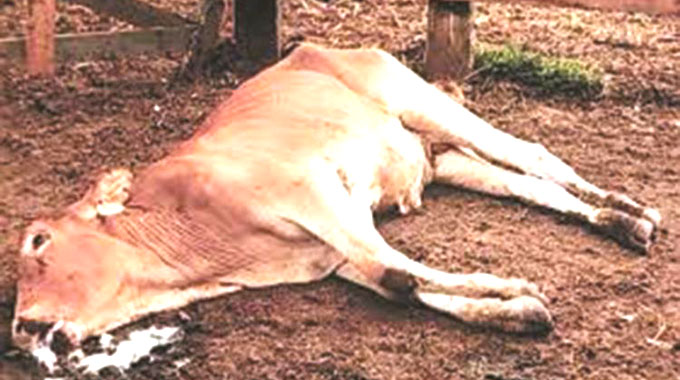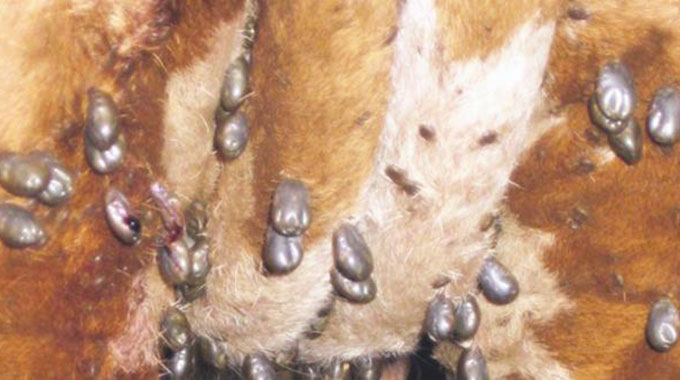
Obert Chifamba Agri-Insight
THIS past weekend I was in my rural home — Mhondoro in Mashonaland West Province.
I was glad to notice that the greenery everybody had been dying to see had since returned to the fields and pastures were also doing quite well, thanks to the rains that have been pounding the country over the past weeks.
The Meteorological Services Department (MSD) had forecast the rainy weather to stretch until last Thursday, but the rains were still falling even as I left Mhondoro on Sunday, mid-morning.
Most of the old-timers I met were thrilled at the prospects of decent yields as most of their crops seem to have recovered completely with some maize having already matured.
The other exciting development is the new lease of life pastures are exuding, while rivers and dams now have water in abundance.
The sad reality, however, is that the resurrecting pastures may not find many grazers this time around, as Theileriosis is still stalking cattle in the district and beyond. They are still dying in their numbers.
There seems to be no respite any time soon for those farmers with cattle, as more and more are succumbing to the disease.
The farmers I talked to all concurred that the disease symptoms have not changed from those they noticed on cattle that died last year and at the beginning of this year as well.
What has changed is the rate at which the cattle are dying now.
Conservatively, nine out of every 10 kinfolks I talked to confirmed losing more cattle in January and the few days that we have travelled in February than last year.
To me, their confessions only confirmed that the disease was not named “January disease” by default, as it is actually living up to its billing and had wreaked havoc in January and even beyond.
The “cattle ambulances” (trucks that ferry the ailing cattle to abattoirs or butcheries for slaughter) are still very active in the area, with butchers buying beasts for as little as US$40 or US$50 dollars, as farmers battle to at least salvage something.
Some have since resigned to fate and allow the cattle to die without even approaching butcheries while some are throwing caution to the wind and eating meat from the dead animals minus all the internal organs, which will be in an advanced state of dissipation in most cases.
I contacted chief director in the Department of Veterinary Services (DVS), Dr Josphat Nyika, immediately after my interactions with the people and he told me that although January disease was not a zoonotic disease that could be passed from animals to people like anthrax, people should just not eat meat from the dead animals.
He said such practices were not good as chances were that they could end up eating contaminated meat at some point and contract diseases.
On the other hand, some animals are being left to rot in the open but this is not happening, as dogs and other wild animals such as jackals are having feasts of their lives every single night when there is no human interference.
This also left me wondering if the dogs or those wild animals would not contract diseases from these carcases and later on spread them to other unaffected areas too.
Dogs are no longer spending time at home but scrounging in the plains and along rivers where most of the sick cattle end up dying after failing to make it out above the riverbanks.
The water that is also collecting in the rivers is getting contaminated by the rotting cattle and is likely to end up being consumed somewhere by other cattle and sometimes people.
The cycle is vicious.
On quizzing Dr Nyika why there seemed to be no respite yet DVS had received consignments of dipping chemicals that were expected to have brought a lull to cattle deaths, he told me that dipping of cattle was happening across the country but the most possible explanation of the continued deaths was that different animals could have been at different stages of infection.
“Some animals could have been at the incubation stage of the disease while some had reached the dying stage with some just getting infected.
There is need to break the cycle that is probably being fanned by the current rains while the disease is also traditionally prevalent during the month of January.
Farmers need to squeeze in their own dipping sessions between those being administered by the veterinary officers in their areas,” he explained.

For effective control of ticks, farmers need to squeeze in their own dipping sessions between those being administered by the veterinary officers in their areas
Dr Nyika said infected animals could be cured using a combination of Butachem, terramycin and limoxin, adding that Butachem was sold in 50ml measures and was supposed to treat only two animals at the rate of 25ml each.
The farmers’ biggest undoing, however, is that the veterinary drugs are being sold in United States dollars whenever they are available.
I noticed that one shop at Mubaira Growth Point was selling the drug at US$19, 20, which when converted to the local currency that farmers need to buy it from the black market, will generate something in the region of $513 using the prevailing rates.
This is expensive to the resource-poor rural farmer who is failing to get cash like everybody else.
The exchange rate is even higher when using Ecocash, which means farmers end up failing to buy the veterinary drugs or when they manage to, they run the risk of using it to treat more than two animals, which makes it less effective.
This means that their cattle will continue to die despite their desperate efforts to save them.
Treatment of sick animals needs to begin as soon as farmers notice signs that it is not feeling well and not wait until it can no longer move or feed on its own because the infection will be irreversible then, observed Dr Nyika.
